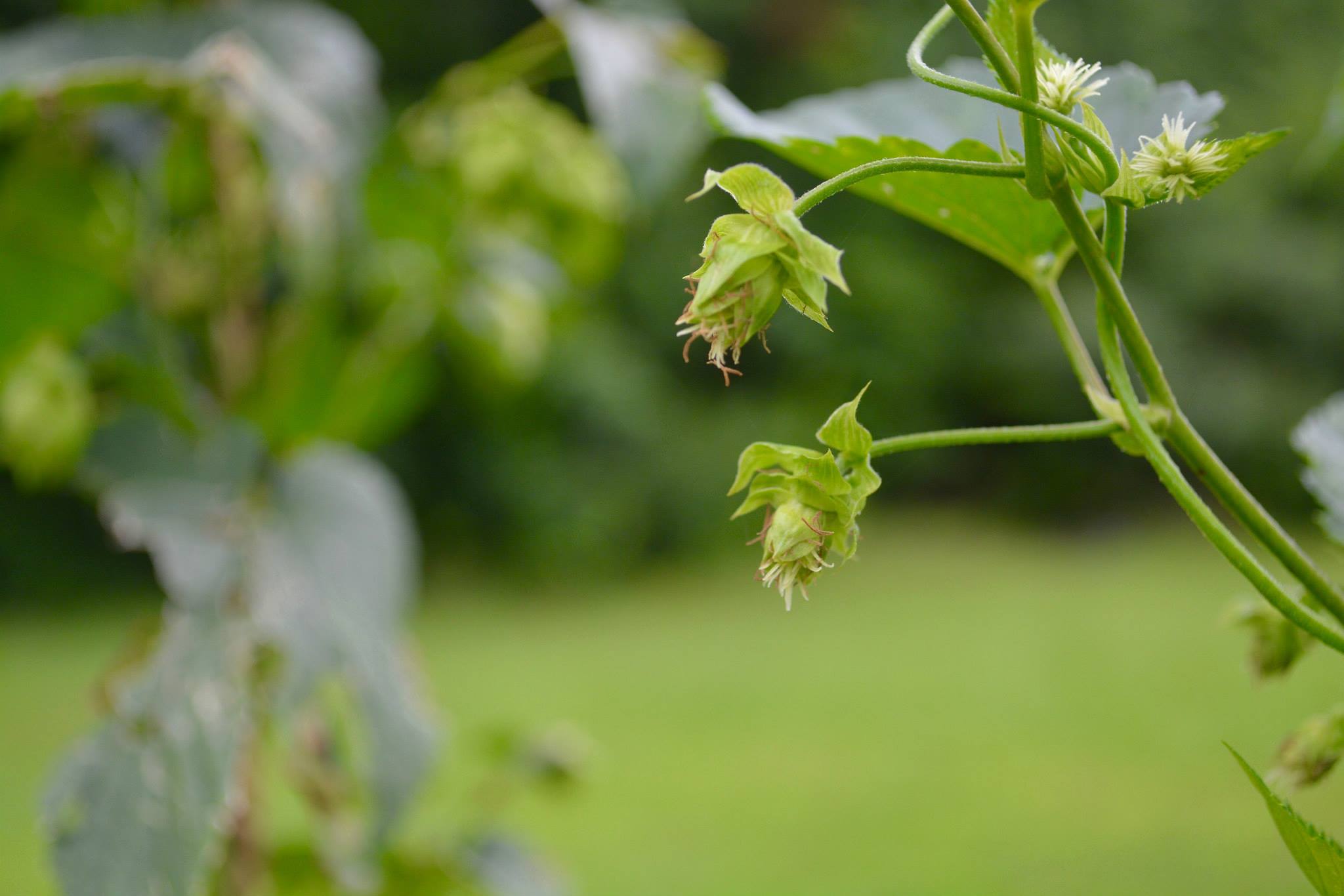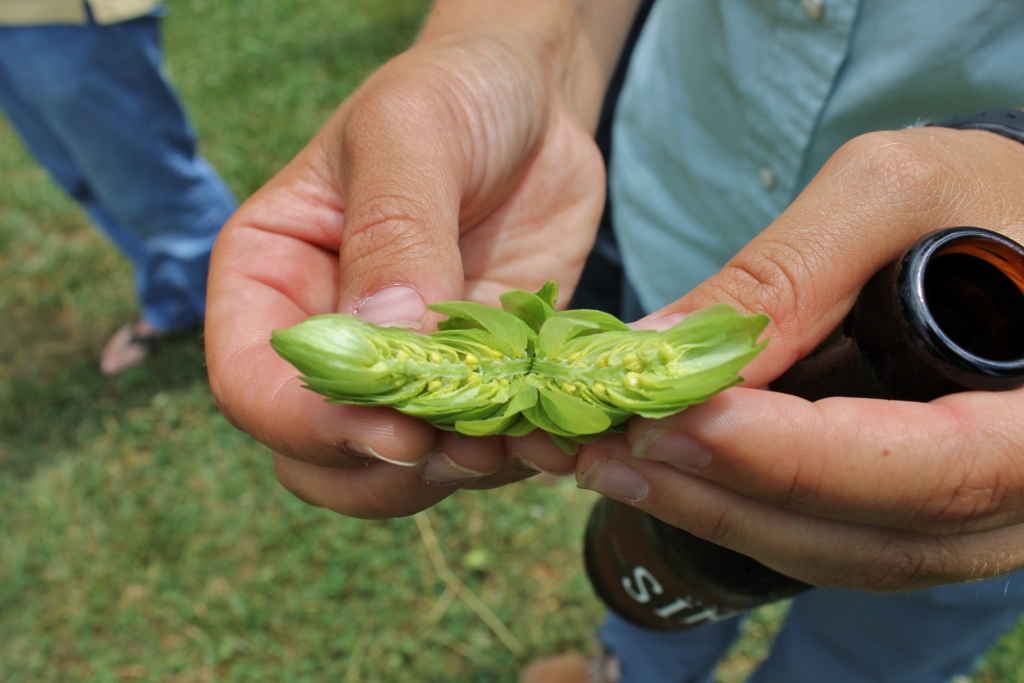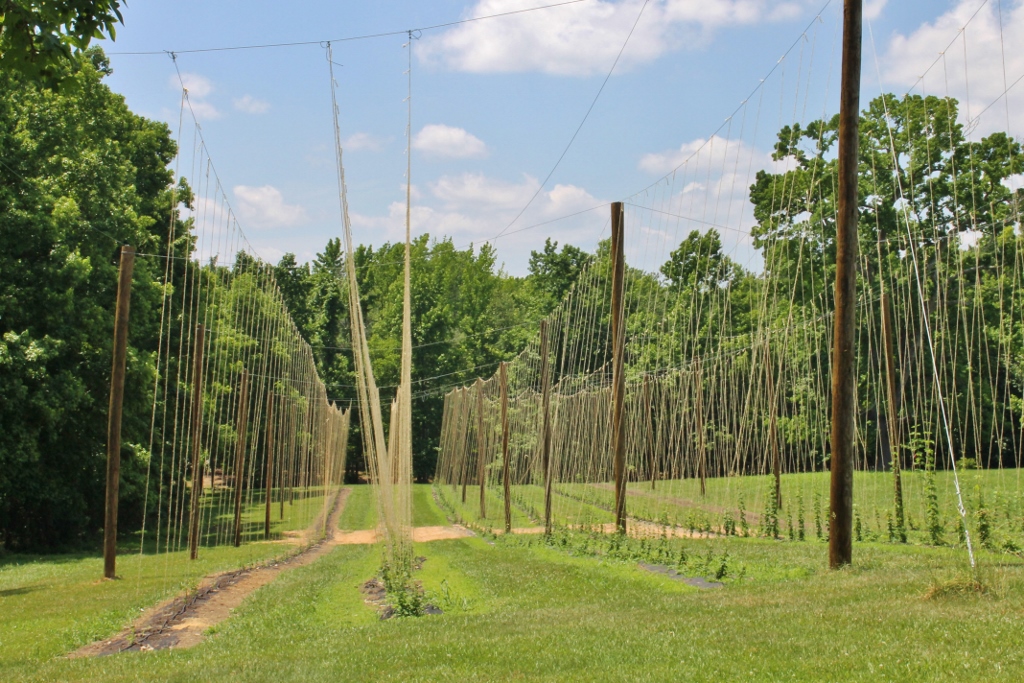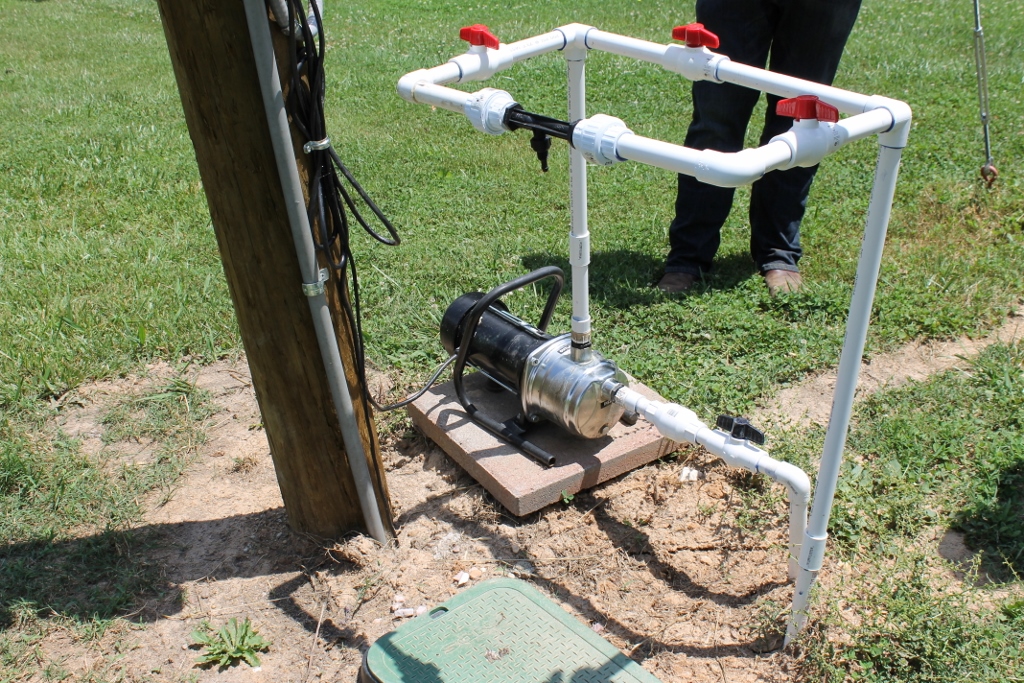Piedmont Hops is run by business partners David Goode and Steve Brown. Our 2013 story tracked Piedmont Hops in its second season and we followed its third harvest with another story in 2014. Click on those stories to learn more about David and Steve’s background and their experiences building a role a new industry.
All of the photos for this story were provided by Steve’s wife, Kathryn Brown.
When David Goode and Steve Brown began growing hops, it was just a hobby, but by 2012 they found themselves growing commercially to meet the needs of the rapidly-growing Virginia craft beer industry. Today, the business consists of 800 plants grown at Piedmont Hops’ two sites in Chesterfield County, Virginia and North Carolina. David and Steve are active in the industry on several fronts and both serve as generous sources of knowledge and experience to fellow growers.
We are fortunate to be able to track this operation into its fourth year. We recently met with David Goode to discuss this year’s progress at Piedmont Hops.
How is the 2015 season going?
So far so good. We have a crop that is all over the place. Our 2014 expansion is not quite acclimated just yet due to our young plants. Our oldest yard is looking great. Next season we expect a more uniform harvest between both VA yards.
Tell us about the varieties you are growing. Did you add any new ones this year?
Currently we are growing Cascade, Chinook and Nugget in NC and VA. Last season we added CTZ in Virginia. Midnight Brewery asked us to grow some Mt. Hood. They look good, so we shall see. We grow more Cascade than any variety. We have a few others we are trying out, but not ready to let the cat out the bag quite yet.
It seems like many of our Virginia growers produce at least several varieties to diversify their offerings, but everyone has a favorite. What’s yours?
Chinook by far. The leaves are huge and very dark green. Even the leaf stems smell of hops when we strip them. You get a nice lupulin tease early in the season before the bines even have cones. The cones are the most fragrant of what we grow. Our Chinook have a nice grapefruit aroma. We have one customer in particular that requests as much Chinook as possible. The guys from Stone Brewing loved the aroma from our Chinook.
Are you trying anything new in 2015?
We completely tore down our 2013 fall trellis and expanded. A grid trellis that uses more spacing and less poles was constructed. The plan is to cut these bines down and take them to Huguenot Hops for processing. Our original yard still lowers for hand picking. We have not changed any marketing techniques. We still make phone calls and send emails to our customers as usual. This spring, we added one variety that we hope will do well and a handful of crowns to trial. Five very healthy wild hops plants we germinated from seed are doing great. We are hoping at least one is a female for cone production. We have two brewers already anxious to brew with them as a test in 2016.
After three years in this business, what is the biggest challenge that you have encountered along the way?
We started in 2012, so this will be our fourth season. Our biggest challenge has been fighting hops downy mildew. However, we have some solid extension agents who have coached us along the way. At one point we wanted to completely dig up a section of yard. Today, that section shows no signs of DM and is fully loaded with cones. We are happy we have such wonderful agents within driving distance of our yard in Virginia.

Each hop cone, or female flower, prepares for a career in beer by progressing from a burr (top image) to a cone (bottom image).
Interest in the industry has grown steadily in the past few years and as a result we have seen many people join the Old Dominion Hops Cooperative. You have been an active member of this grower group for several years now. What is your outlook on ODHC and the changes you have seen as interest in hops has grown?
I love the folks within the Old Dominion Hops Cooperative. It has changed drastically since my first meeting in an old barn. We now have large meetings with video and conference call-ins, a new logo, and a solid team of folks leading various departments. We are a rapidly growing growers organization. The ODHC represents many states along the east coast. I would encourage anyone growing hops in the Southeast to consider joining the ODHC. Devon Kistler, our chairman, has done a wonderful job expanding the functionality of the cooperative.
You have a strong online presence, particularly on social media. Tell us more about how you use this kind of outreach.
We use social media all the time. We love sharing our passion with folks. Whether they are craft beer drinkers, home brewers, family, friends, breweries and brewery owners, we love to show everyone what we are up to. Social media is a great way for folks to actually meet the farmer and see the farm without having to visit. I always tell folks, check out our social accounts for more info on who we are. Your social presence ultimately represents who you are. You can find us on Facebook, Twitter, Instagram and Vimeo.
Do you have any advice for others who are interested in growing hops?
My advice is to start small and expand small. Visit and volunteer at other hops farms if possible. Learn as much by doing online research. NC State has a lot of good research. Start with quality rhizomes or Virus Free plant material. There are many great vendors out there and many not so great. Know your plant growers. We made some mistakes and bought poor quality material. It came back to bite us. Start with some Cascade if not all Cascade. Not only does it sell, but it grows well and will give you an idea of how this crop grows. You will set yourself up for success in year one. Then expand with others. There is so much advice I could be giving right now. This is one of the most difficult crops to grow. Lastly, please do not buy into the hype of hops being a cash crop. It is not.
Do you have any successes you would like to share from this season?
Piedmont Hops has grown quite a bit over the years. In 2012 we started with about 70 or 80 plants. We now have over 800. The bulk of the crop is grown in Virginia, but we will be expanding a bit in North Carolina this fall. Between the two farms, we should have over 1,000 crowns. Steve represents the North Carolina growers within the ODHC. I have taken a volunteer spot within the Hops Growers of America. There is a small growers section developed and we will be collecting national data. I have been chosen to represent our region, mainly North Carolina and Virginia.
Your hops are showing up in local beers—would you like to share where some of them might be headed this year?
Our hops will show up locally in the RVA IPA by Hardywood Park Craft Brewery. This will be our third year working with them. Many of our hops are picked and delivered to North Carolina for fresh hopped ales. Our Nugget is heading way down south to Florida. From the several farm tours we have done and hops we have delivered, our customers and future customers love our product. With repeat customers in Virginia and North Carolina over the last three seasons, that is a great testament to the quality of our cones.
Additional Resources for Readers:
Piedmont Hops website and Facebook page
































